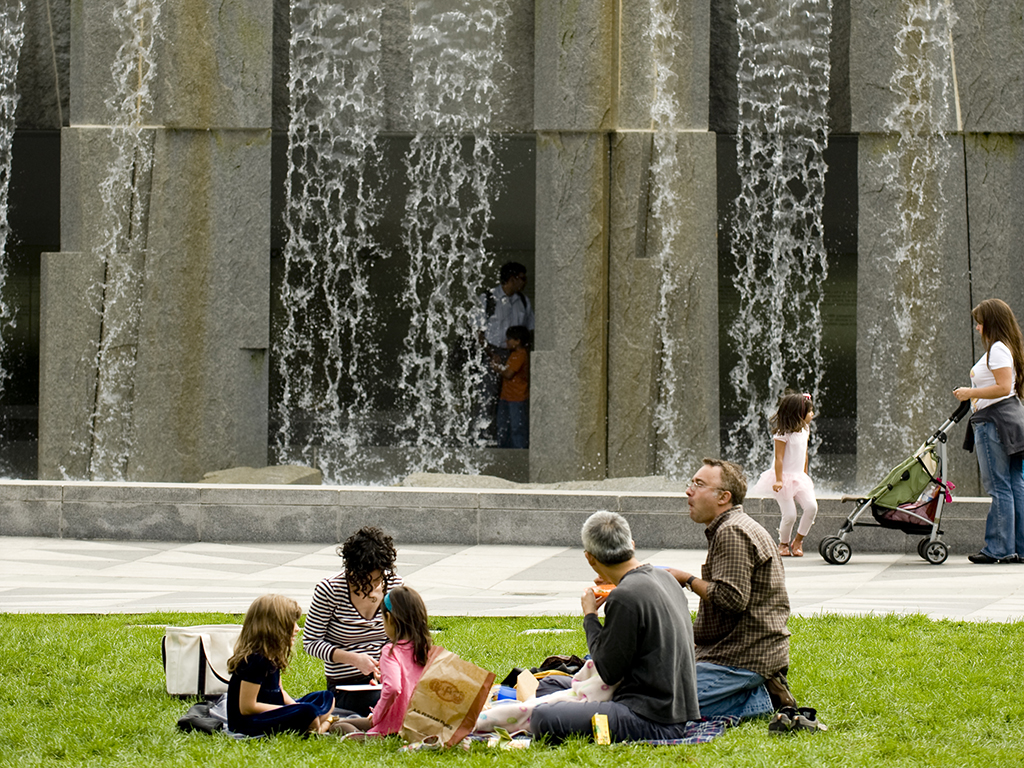A PUBLIC SPACE MODEL REALIZED
With a mixture of open space, cultural facilities, children’s facilities, a convention center, and commercial development, Yerba Buena Gardens is viewed as a model for how to improve public space and urban areas.
A one-of-a-kind community and destination
The guiding vision for Yerba Buena has been that of a genuine neighborhood: a diverse mixture of different uses and constituencies co-existing in a new downtown community. The project, built in a once challenged neighborhood, was integrated into the city, both architecturally and programmatically. An inclusive process resulted in a series of diverse projects being completed that did not ignore the bottom line economics or the aesthetics of the project or neighborhood goals.Yerba Buena Gardens invites activity for people of all ages and backgrounds. Its central garden, the Esplanade, is the public heart that ties the complex project together and connects it to the surrounding blocks. It also serves as a location for more than 120 cultural events each year. The site includes a bowling center, skating rinks, teen-oriented cultural facilities, and creative programming at the Children’s Creativity Center. An extensive ramp and fountain system, capped by an overlook, connects surrounding restaurants and cafés to the green and performance areas and to the Martin Luther King, Jr., Memorial below, and to Metreon and the Yerba Buena Center for the Arts. SFMOMA’s main entrance across Third St. aligns with the garden's attractions.
Yerba Buena Gardens was four decades in the making resulting from the determination of the San Francisco Redevelopment Agency | SFRA, community advocates, committed builders, old and new arts institutions, and civic stakeholders. Some key moments in the site's evolution included:
1976 | Mayor George Moscone embraced a civic vision to combine the construction of a new convention center for the City’s vital visitor industry with the creation of a “public gardens” for all San Francisco residents.
1993-2012 | SFRA oversaw management and operations. After SFRA was dissolved by the State in 2012, the state-authorized local successor agency, the Office of Community Investment and Infrastructure | OCII, assumed the SFRA role.
1993 | The Esplanade and Yerba Buena Center for the Arts opened and the initial Moscone expansion was completed.
1995 | SFMOMA opened adjacent to Yerba Buena Gardens and in 2016 it completed its beautiful expansion, making it one of the largest museums in the world for modern and contemporary art.
1998 | The Central children’s area, including an ice rink, Childcare Center, and Children’s Creativity Museum opened.
1999 | Metreon opened.
2012-2019 | The community in collaboration with the City worked tirelessly to create a new model for the governance, management, and operations of the gardens: They Yerba Buena Gardens Conservancy.
2019 | City approved the Yerba Buena Gardens Conservancy’s 42-year lease: this change completed the shift in the overall management and ownership to a collaborative partnership between the Conservancy and the City of San Francisco: the next era in the successful management of the Gardens.
2019 | The Moscone Convention Center expansion is completed.
*Content from the Rudy Bruner Award given for development of extraordinary urban excellence to serve as national models.
